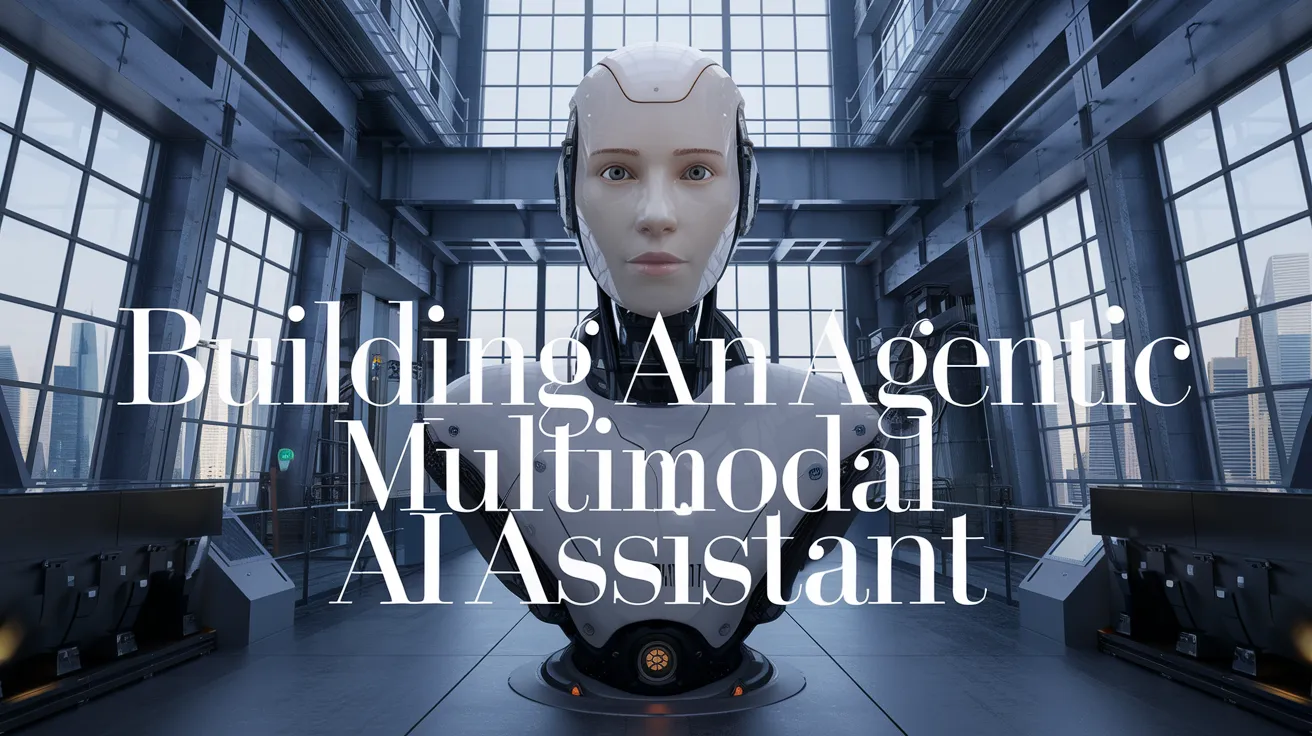Building an Agentic Multimodal AI Assistant

In today’s data-driven landscape, modern enterprises generate vast amounts of diverse information, from text documents and PDFs to audio recordings and images. To illustrate the potential of an AI assistant, envision one that can not only read transcripts of a quarterly earnings call but also interpret accompanying charts and audio comments from the company’s CEO. According to forecasts from Gartner, by 2027, up to 40% of generative AI solutions will be multimodal, a significant increase from just 1% in 2023, signaling an urgent need for businesses to adopt multimodal understanding within their applications.
Defining the Multimodal AI Assistant
Achieving this vision requires the development of a multimodal generative AI assistant capable of processing and integrating text, images, audio, and other data types. Central to this effort is creating an agentic architecture that empowers the AI assistant to actively retrieve information, plan tasks, and make decisions, moving beyond static responses to user prompts.
A Solution Using AWS Technologies
This article explores a comprehensive solution utilizing Amazon Nova Pro, a state-of-the-art multimodal large language model (LLM), alongside Amazon Bedrock’s new features, including Bedrock Data Automation for efficient processing of multimodal data. We demonstrate the agentic workflow through a financial management AI assistant that processes various types of data, such as audio from earnings calls and visual content from presentation slides, offering robust quantitative analysis and grounded financial advice.
Understanding the Agentic Workflow
The agentic workflow is defined by key stages that enable complex decision-making: Reason, Act, Observe, and Loop. This iterative decision process allows the assistant to manage complicated requests effectively, overcoming the limitations of singular prompts. However, implementing such systems can introduce complexity, making structured frameworks like LangGraph essential for maintaining control and efficiency within the workflow.
Components of the Financial Management Assistant
Our proposed financial AI assistant incorporates several essential components:
- Knowledge Base Retrieval: The assistant utilizes Amazon Bedrock Data Automation to process raw data, extracting relevant text, transcribing audio, and enabling efficient data analysis. This service acts as a bridge to the agentic workflow, transforming raw information into structured data for further action.
- Router Agent: Upon receiving user inquiries, the router agent interprets requests, utilizes memory of prior interactions, and plans necessary actions, determining if internal data suffices or if external information is required.
- Multimodal RAG Agent: For queries involving multimedia, the assistant employs unified API calls to extract insights, ensuring responses are grounded in factual data and minimizing inaccuracies.
- Hallucination Check: The workflow includes mechanisms to verify the reliability of generated responses through secondary models that validate outputs, ensuring that the assistant maintains integrity in its answers.
- Multi-Tool Collaboration: This feature enables various specialized agents to perform focused tasks, culminating in a robust synthesis of information, elevating the assistant’s capacity to handle complex requests efficiently.
Real-World Applications and Industry Impact
The multimodal agentic workflow holds transformative potential across multiple industries. In financial services, it can unify diverse data types to deliver actionable insights, automating report creation and risk analysis. In healthcare, the assistant can process clinical documents and audio, ensuring reliable outputs for decision-making. Moreover, in manufacturing, it can streamline troubleshooting by correlating sensor data and equipment manuals.
Constructing an Effective AI System
Implementing such an advanced AI assistant requires careful design and planning, leveraging AWS technologies for scalability, security, and integration. Solutions can be tailored for different use cases, using Amazon Nova’s capabilities for engaging with multimodal tasks while adapting the underlying architecture to meet varying enterprise needs.
As the need for sophisticated multimodal AI systems grows, this article serves as a guide for developers and enterprises looking to explore and implement such solutions. The potential to reshape workflows and enhance productivity through intelligent, agent-based assistants is substantial, marking a pivotal shift in enterprise operations.
Conclusion
The time is ripe for the transition away from siloed AI models toward integrated multimodal systems that address a variety of input types. By employing Amazon Nova and Bedrock Data Automation alongside frameworks for orchestration like LangGraph, organizations can create agile AI assistants capable of delivering insights at unprecedented speeds and scales. This represents a formidable opportunity for enterprises ready to embrace the future of AI-driven productivity.
We encourage you to experiment with the architecture detailed in the BDA_nova_agentic GitHub repository, tailoring it to your organization’s specific needs. The potential applications of multimodal AI are vast, and the journey toward building intelligent agents begins with embracing this powerful technology.
About the Authors: Julia Hu, Sr. AI/ML Solutions Architect, is dedicated to improving productivity in Generative AI applications. Rui Cardoso is a partner solutions architect at AWS, focused on AI/ML and IoT. Jessie-Lee Fry specializes in Generative AI and Machine Learning, with expansive experience in product strategies and customer success.